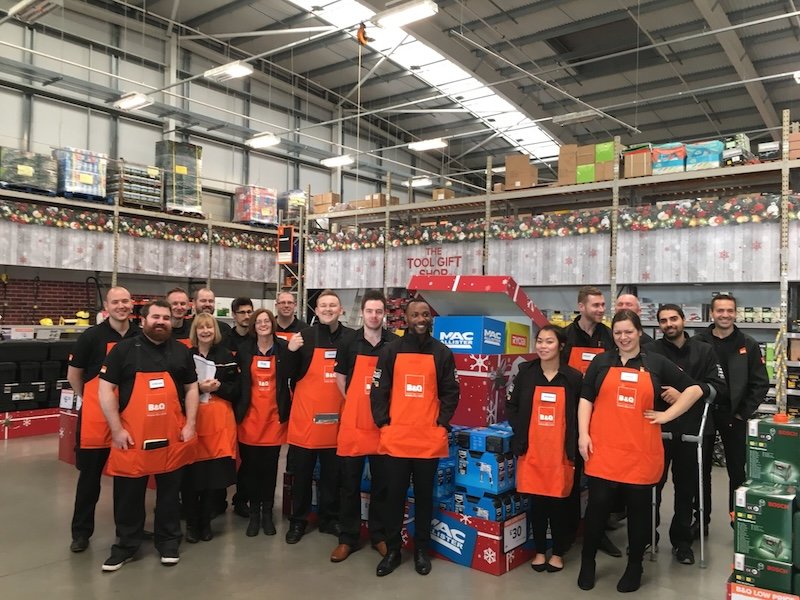Retail technology gone wrong: Marks and Spencer slammed over new disabled unfriendly self-service checkouts
M&S is currently deploying new self-service checkouts across its stores.
RTIH tested them out last week and found them to be a definite improvement on what went before.
But not everyone is a fan. A disabled customer has taken to Twitter to air her frustrations after a visit to the M&S store in Ipswich.
RieRieB said that she “left extremely upset. Making things less accessible for your disabled customers, as you have with your new self-service checkout design, is unacceptable and legally questionable.”
She continued: “On a Friday after uni I like to treat myself to a roll up and down the aisles, picking up any little treats I fancy. A congrats for getting to the end of the week.”
“Because I am neurodivergent, I do this with my headphones on, because the store is a very overwhelming environment for me. I also use the self-service checkout, so I can keep my headphones on. Also, your staffed checkouts are really awkward to use (read: quite painful and pretty impossible) as a wheelchair user.”
When she saw the new self-service tills, she became upset at the new design not being accessible for her.
She said: “The screen is too high for me to reach, and the basket section is too low for me to reach. You have left some lower self-service tills, but these are a narrow version of the old design, and squished together like sardines.”
“I tried to use one, but the other customers using the tills either side of me were practically on top of me as that tried to access their till. They were leaning over me and chair, knocking into me, making me feel trapped and panicked.”
“I got very upset and made a bit of a scene. I’m sorry about that. The member of staff who helped me was extremely lovely, and I appreciated his kindness. He told me that as soon as the new tills were put in he raised the issue of customers in wheelchairs accessing the tills, but was told he’d just have to help us.”
RieRieB went on to accuse M&S of being in breach of the Equality Act and point out that there are approximately 14.6 million disabled people in the UK, and of those around one million are wheelchair users.
“You cannot be ignorant of our existence. Making things less accessible for us is unacceptable.”
She concluded: “I am willing to work with you on this to make the necessary changes to restore access to checkouts at this store.”
M&S did not respond to our request for comment, but they did tell RieRieB that they had reported her comments to their in-store trading teams, and her feedback would be used when reviewing the layouts of stores.
To which RieRieB responded: “Oh @marksandspencer - this is not how you respond to this. “I hope you can continue to shop with M&S with confidence in the future.” HOW CAN I SHOP WITH YOU WHEN I CANT ACCESS A CHECKOUT?! That does seem a fairly integral part of the shopping process.”
new culprits on the block
Last week, Leigh Sparks, Professor of Retail Studies, Deputy Principal, University of Stirling, and Chair Scotland's Towns Partnership, discussed the wider move to non-food self service in M&S and self-service checkouts generally.
In an online post, he noted that his Twitter timeline had been populated recently by photos of retailers doing, for her, some strange things with self-service tills.
“These tills have popped up everywhere over the last decade and not always to universal acclaim. B&Q and WHSmith have often been prime offenders, but there are new culprits on the block,” he wrote.
He added: “I can see the point of self-service tills, sometimes, for both the retailer and the consumer. But, I do feel a balance is needed and there is something positive about good service in a retailer.”
“I appreciate that the service some consumers want (including me) at some times is best served by a self-service operation. It is the routinisation of that that concerns me.”
“So the almost complete removal of full service checkouts in some large food retailers worries me. I don’t feel this is a good look and worry where it ends up for retailers and consumers.’
By way of example, Sparks flagged up Sainsbury’s introducing barriers for those leaving self-service checkout areas. Customers now need to take their receipt and scan it on the barcode reader in front of the barriers.
And then there’s Marks and Spencer.
Sparks said: “Last weekend I popped into a large Marks and Spencer and found they had removed all the service counters in the clothing and non-food sections.”
“I was surprised at this further expansion of self-service. My short observation of the tills showed not a single transaction that did not need staff intervention, including my own.”
“I tweeted that observation and received a very large (for my tweets) and varied response.”
“Most respondents were against such changes, pointing out the difficulties, the isolating tendencies, issues for those with hidden and/or visible disabilities and generally the feeling that shopping (even paying) needs to be more than this.”
“Others pointed out that this was not new and other retailers were doing this and had been for some time. This was combined with an observation though that M&S self service checkouts were amongst the most unreliable in the sector; whether this applied only to food or not was unclear.”
Sparks went on to ask whether the typical M&S clothes shopper is ready for such impersonal ‘service’.
He continued: “Time will tell of course (and I do understand the labour and cost saving point) and maybe most people are (resignedly) accepting of what now makes up so much “service”. But if it does not work consistently and seamlessly then consumers will be unhappy and take action accordingly.”
Sparks concluded: “Retailers are increasingly polarising into functional and experimental types. Moving to the former lays one open to more direct comparisons on function (including price). I wonder if unintended consequences will emerge from this rush to automate.”
“Or maybe I am too nostalgic for service in retailing that actually involves humans? (and I know that too can also be dreadful!)”
Agree, disagree? Let us know your thoughts in the comments section below.















Continue reading…